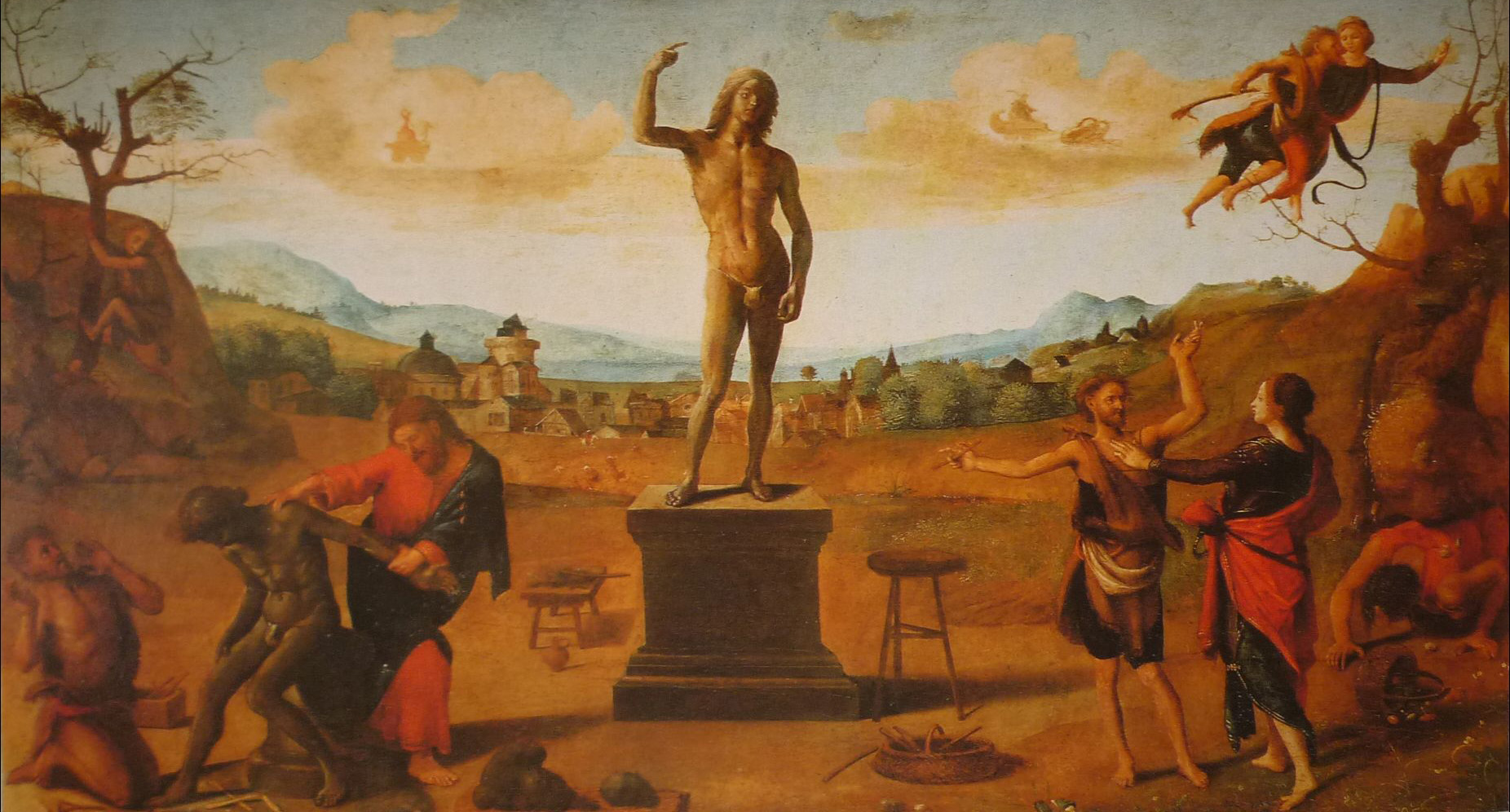Old myths – new style. Nachleben of the Ancient Myth

<https://www.wga.hu/html/p/piero_co/allegory/promethe.html>
Bibliography to the »Nachleben of Classical Mythology«
The comprehensive on-line bibliography to »The Nachleben of Classical Mythology« from ancient to modern times, compiled by Bernhard Kreuz, Petra Aigner and Christine Harrauer, is constantly being updated, and at present it covers 718 pages (Version 2/2024).
Data base »Newly invented Myths of the Renaissance period«
Creative poets, scholars and artists of the Italian Renaissance clearly saw the timelessness and versatility of the ancient myths, and playfully put them to use to create new myths, modelled on the classical example; and very soon, also poets and artists from other European states tied in with this tradition. This new data base was drawn up to provide access for research in this field and to allow for international cooperation. It is to be launched on-line after a complete incorporation of all the existing synopses of the corresponding texts, including brief biographies of all relevant authors.
Entry criteria are as follows:
I. Conceptual redesign of ancient myths:
- Introduction of new mythological characters into a traditional myth (extension of myths).
- Integration of traditional characters into a new setting.
- Invention of new mythological characters: mainly personifications of locations, rivers (etc.) in order to idealise the homeland of the modern poet or the birthplace and home of a person that is to be hailed.
- Continuation of an ancient story (continuating addition of a traditional myth).
II. Transformation of traditional myths:
- Elaboration of unusual myths, i.e. of story-lines which had rarely (or only one time) been handed down, as well as myths whose story-line was not elaborated in Antiquity.
- Mythological stories which show a surprisingly new apprehension of explanatory notes by ancient scholars to difficult mythological references and contexts.
- Origin of new myths through misconceptions or corrupted texts as ancient works had been handed down.
The data bank can be accessed in German and English. It does not cover the ›conventional history of reception‹ of ancient authors like Vergil, Ovid, Statius and others, but solely covers newly invented myths in the fields of literature (mainly Latin, scarcely Italian, English and French), music (librettoes and other musical texts) and the visual arts (illustrations in paintings, frescoes, tapestries, marriage chests a.s.o. and in sculptures.)
For a start, the data base focusses on the Italian Renaissance, and it is to be extended through international cooperation, temporally and geographically.
In the field of music, there is already a cooperation with Alexander Rausch from the Research Group Musicology at the OeAW. With him a joint research project is being planned, whose goal is the systematic scientific compilation of the libretti.
- K. Zeleny, Lilio Giraldo, De deis gentium varia et multiplex historia, Basel 1548. Transkription der Editio princeps (Wien, ONB *38.A.23)
- R. Wallisch, Giovanni Boccaccio, Genealogie deorum gentilium (nach der Ausg. v. V. Romano, Bari 1951).
Principal Investigator
Team
- Bernhard Kreuz
Database Support
- ARZ
- ACDH
Cooperations
- Alexander Rausch (OeAW, Institut für Kunst- und Musikhistorische Forschungen)
- Elisabeth Klecker (Universität Wien, Institut für Klassische Philologie und Mittel- und Neulatein)
Funding
Jubiläumsfond der Stadt Wien (2010/11)
Links
- Neulateinische Wortliste (J. Ramminger)
- Cambridge Society For Neo-Latin Studies (CSNLS)
- Early Music Online
- Baroque Composers Timeline
- Online Renascense Editions printed in English between the years 1477 and 1799
- Ufficio Ricerca Fondi Musicali
- Poeti d'Italia
- Internet Culturale. Cataloghi e collezioni digitali delle biblioteche italiane
- Dizionario biografico degli Italiani
- Bibliotheca Augustana
- Neolatin Library (Neulateinische Texte)
- An analytic bibliography of on-line Neolatin Texts